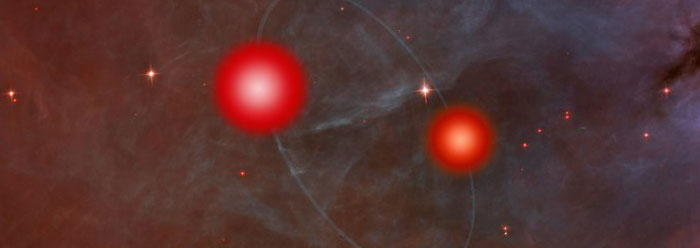About half of the stars in the Milky Way Galaxy are "binary," meaning that they are paired.1 According to secular star formation theory, stars first formed by condensing gas clouds that nearby star explosions helped compress. Adjacent stars then began orbiting one another. Next, secular scientists hypothesize that low-mass binary stars lock themselves into accelerating orbits.
One explanation for this acceleration is called "magnetic braking." It describes how stars could lose angular momentum through mass loss, a very slow process in theory. If this occurred, then "This suggests that evolution timescales are too long for M-dwarf binaries to decay into tight orbits within the age of the Universe," according to the new finding.2
After only 13.7 billion years—the age of the universe according to the assumptions underlying Big Bang cosmology—the orbital period of such stars could not be fewer than five hours.
Space.com quoted the study's lead author Bas Nefs as saying, "To our complete surprise, we found several red dwarf binaries with orbital periods significantly shorter than the 5 hour cut-off found for sun-like stars, something previously thought to be impossible."1 The study is scheduled to appear in the Monthly Notices of the Royal Astronomical Society.2
The research team spotted one pair of stars that orbits every 2.5 hours. The universe would have to be about 28 billion years old to accommodate such stars, assuming they followed the standard mass loss schedule. Nobody wants to accept that.
According to creation astrophysicist Jason Lisle, this new information highlights foundational problems for the old world proponents:
The discovery of stars with a period of HALF the theoretical minimum is surprising from a secular point of view. It indicates (1) the universe is much, much older than the Big Bang allows (a conclusion that secular astronomers will immediately reject), (2) the magnetic braking mechanism is much more efficient than theoretical predictions, (3) some other natural mechanism is responsible, or (4) the universe was supernaturally created, with binaries already in place.3
References
- 'Impossible' Stars Found in Super-Close Orbital Dances. Space.com. Posted on space.com July 25, 2012, accessed July 29, 2012.
- Nefs, S. et al. 2012. Four ultra-short period eclipsing M-dwarf binaries in the WFCAM Transit Survey. Accepted for publication in Monthly Notices of the Royal Astronomical Society.
- Lisle, J. Personal communication, July 30, 2011.
* Mr. Thomas is Science Writer at the Institute for Creation Research.
 Four
Sets of 'Impossible' Stars by Brian Thomas, M.S. *
Four
Sets of 'Impossible' Stars by Brian Thomas, M.S. *